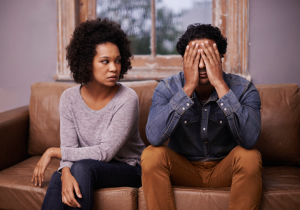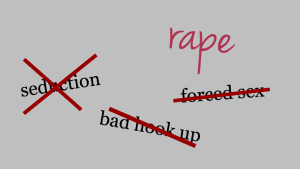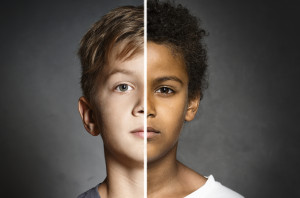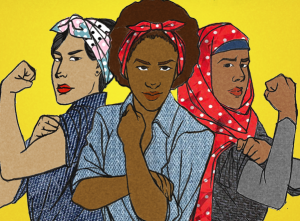This is a video I wish I could have watched when I was growing up, although probably hosted by somebody else, because I don’t know if 30-year-old me would have been the most inspiring for 13-year-old me to see – although maybe, but I don’t know. Thirteen-year-old me was a little judgy.
I so vividly remember flipping through a dELiA’s catalog for the first time, and seeing these tweenage models running around in bikinis, and I looked at their thighs, and they didn’t touch. I looked down at my thighs, and they did touch.
Even though I had never heard the phrase “thigh gap” – I didn’t really have the Internet, and certainly not Instagram – but immediately, I thought something was wrong.
This really tipped the scales for me in an already dangerous path toward hyper controlled eating and fitness and overall body loathing because what I might have known at the time, but didn’t want to understand, was that my body is built in a particular way, and my thighs are always going to touch. But I thought that if I could mold my body to look like this girl’s in that dELiA’s catalog, I would more more attractive. I would have more friends. I would be more popular. I would be considered more worthy, and, ultimately, protected from things in the world that might hurt me.
If I could leap to such unhealthy conclusions about my body based on images in seasonal catalogs, I can only imagine how much more complicated body image has become in an era of social media and selfie-centered challenges to showcase skinniness.
Case in point, the recently-gone-viral belly button challenge. Started in China, the belly button challenge alleges that if you can wrap your arm from around your back and fit your finger in your belly button, congratulations! You’re acceptably thin. When in reality, congratulations! Because you probably have an incredibly flexible arm socket and would probably do quite well in yoga.
In other words, a lot of these skinny challenges, tests, and criteria allow on smoke and mirrors and willfully ignoring how our bodies work on an individual basis. I think a lot of us know that, but choose to believe otherwise. I know I did.
In choosing to believe that we should look a certain way, that outlines the work that we have to do, the kind of self-control that we have to exert in our daily lives in order to meet up to these false standards that gives us guidelines, that gives us boundaries, that gives us things to work with in a world that otherwise feels completely unmanageable.
The thing that I’ve learned in the past 20 years, since I first really started dealing with these kind of body issues, is that the harder thing, the more challenging thing, the thing that actually takes all that self-control and determination, and willpower that that fake thinspiration preaches day in and day out, is actually letting go and learning self-love, rather than self-loathing.
I have personally experienced how it’s harder to treat yourself healthfully inside and out than go on an hour-long run in blazing heat when you really don’t want to – because the thing about that run that’s different than this whole self-love thing, is that there’s a beginning and an end.
It’s a discrete thing that you can check off before you go to sleep at night. I wish that I had understood and internalized this when I was younger to save myself the time down the road of having to unravel all of these lies that I not only believed, but told myself about the importance of being able to fit coins in my clavicle, and stand with my feet together and my thighs not touching, and instead have worked on the more important thing – not of how I should look, but how I should be.




















